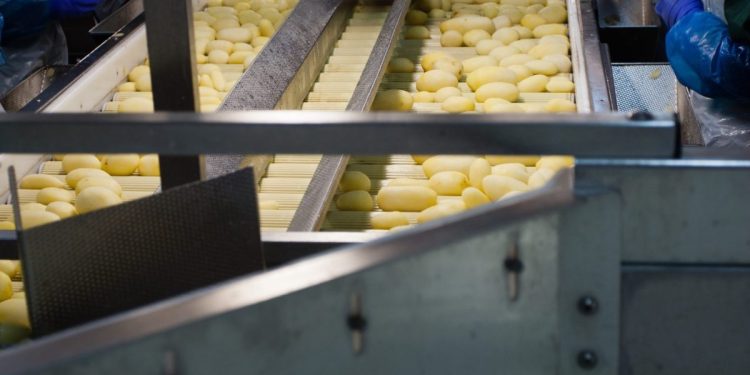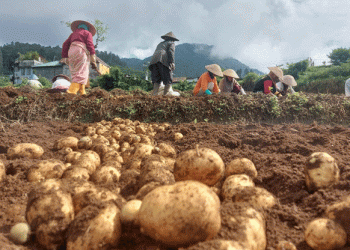The growth of potato processing in the north-west of Europe continues due to the recent or planned for the medium-term construction of 3 new processing sites in the Hauts-de-France region. These large investments follow the regular expansion of potato fry production facilities in Belgium, the Netherlands, France, and Germany, located in the heart of the preferred supply region, which is known as the “NEPG zone.”
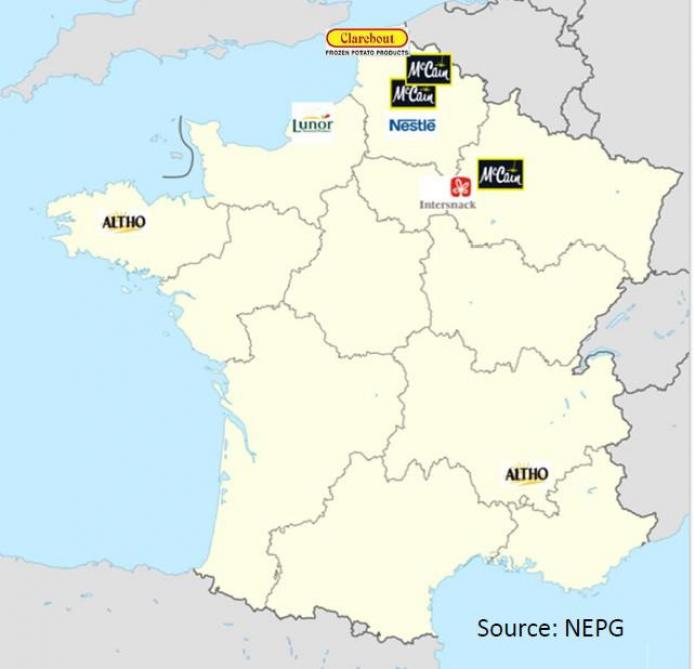
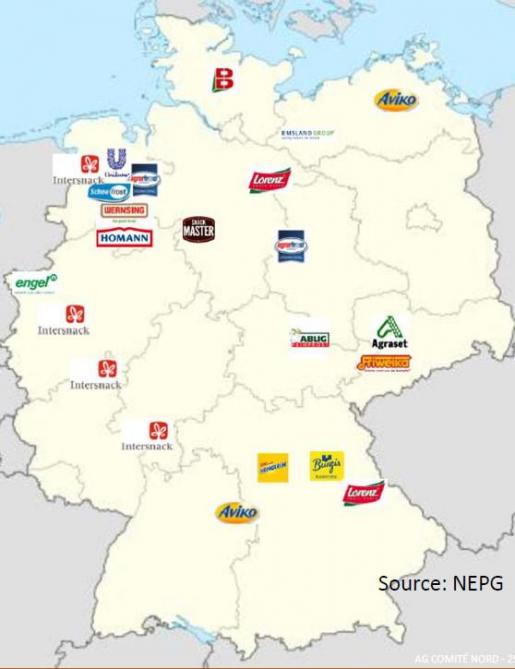
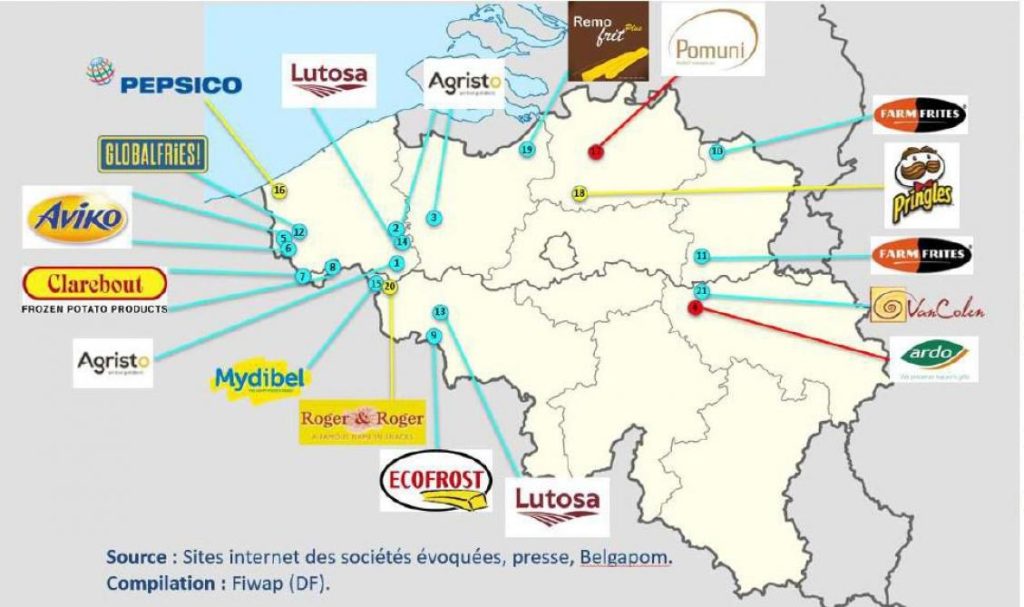
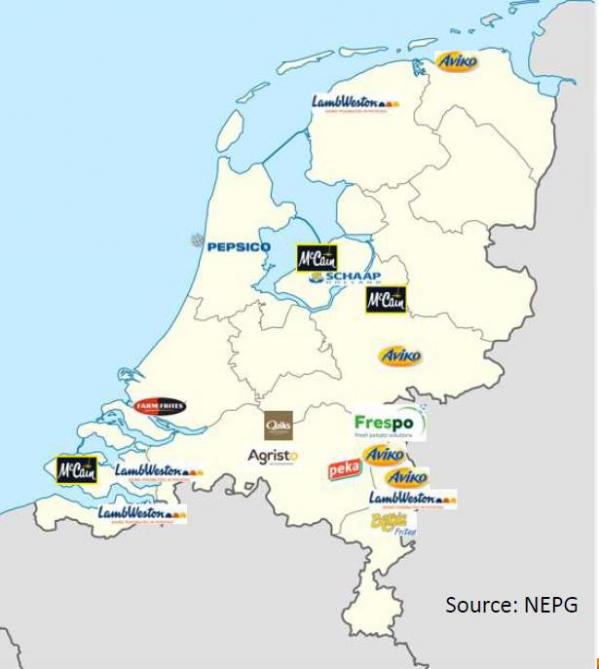
Compared to the potato market table, Belgium’s industry dominates significantly, while France, the Netherlands, and Germany have more balanced assessments of the domestic and export markets for fresh produce and industrial processing. These rapid changes benefit the agriculture and agri-food sectors in these 4 countries, but inevitably raises the question of sustainability in the context of the global potato-based frozen food market. Recent crises (Covid-19, energy, inflation) have demonstrated the weaknesses and strengths of the sector facing growing competition from Asia. NEPG zone European potato garden. The main potato production is located in a vast area covering the Hauts-de-France region, Belgium, the Netherlands, and the Rhineland (because of Brexit, access to British potatoes is difficult today). Here, production conditions remain the best in the Netherlands where 4 historic producers dominate: Avico, Lamb Weston, McCain, and French Fries on the Farm. Taking into account smaller operators as well, the list includes approximately twenty facilities located primarily in the southern part of the country. The Netherlands is dominated by four historical producers: Avico, Lamb Weston, McCain, and French fries from the farm. Considering also smaller operators, there are about twenty facilities located mainly in the south of the country. Deep soils, often with available irrigation, large plots, the know-how of the producers, and a moderately humid climate (despite climate change, which makes heat and drought more frequent)
Based on NEPG data for the 4 countries mentioned above (NEPG-4), 21.6 to 23.6 million tons have been produced over the last 5 years, excluding seeds and starch, on an area between 498,000 and 522,000 hectares. This means that average yields vary from 43.1 to 46.2 tons/ha in different years. Areas want to increase while yields tend to stagnate rather than increase. The driving force for this sector is clearly the industrial processing of French fries (both frozen and fresh), chips, croquettes, and other delicacies. Compared to the potato table market, Belgium is dominated by industry, whereas in the other three countries (France, Portugal-Brazil, and Denmark) the balance between the table potato markets (for domestic consumption and exports) and industrial processing is more balanced. There are approximately ten industrial operators in Belgium who in 2022 used a total of 6.2 million tons of French fries (source: Belgapom), in 16 different varieties (frozen or fresh).
There are also three chip or tile manufacturing plants located mainly in the western part of the country. Data on supply for all these plants for 2023 has not yet been released, but it is certain that the 6.5-million-ton mark has been surpassed. The main producers are Clarebout, Lutosa (McCain), and Agristo. In 2022, therefore, Belgium produced 2.8 million tons of frozen fries, 257,000 tons of fresh fries, and 700,000 tons in chips and other products. Investments made in 2022 reached €300 million. Over the last 10 years, average annual growth in the Belgian industry was about 8%, leading to a doubling in supplies between 2013 and 2024 (>6.5 million). If there were a significant decline due to COVID, then recovery would have been very strong (>10%). Belgian finished products account for 18% of sales in the domestic market, and 82% of sales outside of Belgium. In Belgium, there are approximately ten industrial operators producing 16 varieties of frozen or fresh French fries, as well as three chip or potato chip production plants located mainly in the western part of the country. Although supply data for these plants for the year 2023 has not yet been made available, it is certain that the 6.5-million-ton mark has been surpassed. The Netherlands is dominated by four historical producers: Avico, Lamb Weston, McCain, and French fries. Taking into account smaller operators, there are about twenty enterprises, located mainly in the south of the country. These include Agristo, PepsiCo (chips), and several other enterprises (Peka, Schaap, Frespo) producing fresh products such as French fries, slices, and cubes.
The Netherlands consumes about 4 million tons of potatoes annually (source: VAVI-NAO), but they clearly cannot meet this demand. In 2023, Dutch factories produced 1.8 million tons of frozen food and 354,000 tons of other products. Over the past 10 years, the average annual growth rate in Dutch industry needs was 1.1%, but Covid caused a sharp decline in 2020 that has hardly been recovered from since then. The Netherlands is dominated by four historical producers: Avico, Lamb Weston, McCain, and French fries from the farm. In addition to these larger operators, there are about twenty smaller facilities located mainly in the south of the country. In Germany, approximately fifteen operators operate on a large scale, with more than 20 facilities across the country. These include Agrarfrost, Wernsing, and Intersnack, among others. The variety of finished products, not necessarily frozen, is quite wide, ranging from frozen French fries and fresh French fries to canned potatoes and salads, as well as peeled and sliced products packaged in vacuum bags, chips, snacks, and ready meals. The German industry consumed 3.86 million metric tons in 2022, and has shown average annual growth of 1.2% over the past ten years.
Recovery from COVID-19 has reached more than three percent per year, which is expected to lead to total requirements nearing four million metric tons within the near future. Finally, in France, industrial transformation has historically been dominated by McCain, who owns 3 large companies. The recent opening of the Clareboot plant in Dunkirk is an important development in the business scene on French soil, as it will soon be followed by the new Ecofrost factory near Arras and Agristo near Cambrai. Therefore, with the exception of Alto’s 2 chip plants in Brittany and the southeast of the country, most industrial activity takes place in Hauts-de-France and Grand Est. These regions are expected to significantly expand their production areas (talking about an additional 30,000 ha over 5 years) in order to supply the new French fry production lines. During the 2022/23 season, the French factories produced 1.49 million tonnes (source: GIPT), producing 691,00 tonnes of finished products, of which 2 / 3 are frozen food and 13 % are chips. It is estimated that 71 % of this production is exported outside the national borders. Over the past 10 years, the average annual growth rate has been 2.3%. In 2021 and 2022, the recovery from Covid saw growth of 14%, and in 2023, it was 5.3%. It is expected that, in the short term, the opening of additional plants will lead to an increase in total supply volume by 2 million tonnes.
The recent opening of Clarebout in Dunkirk was an important development for business in France, especially as it will soon be followed by the new Ecofrost near Arras, and Agristo near Cambrai. However, the industry has still not fully developed. The total processing capacity of the NEPG-4 currently stands at around 16 to 17 million tonnes, with Belgium accounting for more than 40% of this. The Netherlands’ territory seems to be saturated. In Belgium, further developments are likely in the Ecofrost area (Peruvelz), the Agristo area (Welsbeck), and the Avico area (Poperinge). However, potatoes will need to be supplied from more or less distant subregions, predominantly in France but also in Germany’s Rhineland. As the potato area in Belgium is unlikely to exceed 100,000 hectares under the risk of using clearly too short crop rotations, compared to the 90,000 to 95,000 hectors in recent years.

